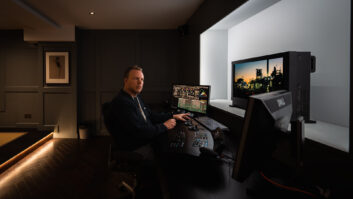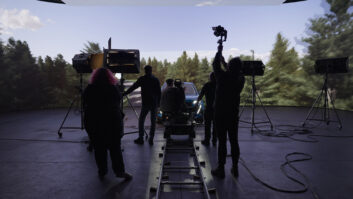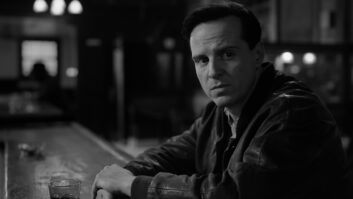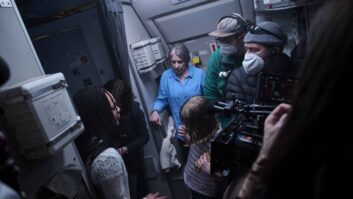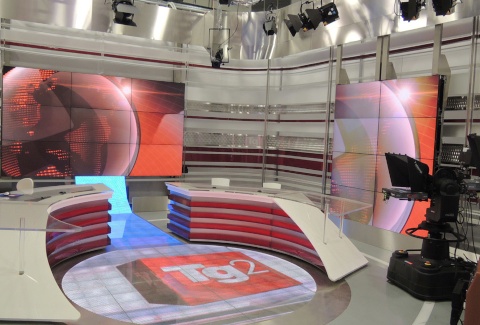
Rai Channel 2 news production has finished its T-Cube (Transition To Tapeless) project based on an Avid-based system and a Front Porch Diva archive. The project involved the intensive retraining of over 500 Rai staffers. Mike Clark has the story.
The latest step in Italian state broadcaster Rai’s on-going project for the digitisation of its news programmes was the launch of the new full-HD TG2 (Rai’s channel 2 news programme brand), featuring an Avid integrated news production system that enables simultaneous access by 160 journalists, features seven software suites (i-News, Assist, Access, i-News Instinct, Newscutter, Interplay Capture and i-News Command) and is completely HD.
From the beginning of the year, TG2 is therefore Rai’s first entirely digitised generalist TG and director Marcello Masi (pictured) explains: “This digitisation is an authentic revolution. It enables us not only to be on all the platforms, but above all to use 16 reception channels from hundreds of sources — colleagues with mobile phones, iPads or video cameras, as well as from the web, in realtime.”
Inaugurated in 1990 as the World Cup’s IBC, as well as radio and TV production, Italian state broadcaster Rai’s 190,000m² Saxa Rubra production centre in Rome controls incoming and outgoing HF signals for Rai Way’s signal transmission and broadcasting network. The centre features 16 digital TV studios, 70 editing rooms, 10 graphic studios and an OB vehicle depot.
The first floor in building D (TG2) now hosts two studios and two control rooms, a teleport, 12 editing rooms, an eight-suite graphic room, two equipment rooms and full fibre connection with all the journalist areas on the floor above, as well as with a second (small) production centre located at Fontanella Borghese (near the parliament), featuring four editing rooms, two ingest, two playout and four journalists’ desks connected to the main system.
Going tapeless
When the decision for the ramp-up to tapeless HD production was taken some years ago, Rai commissioned a market analysis identifying the industry’s key players, then visited some of the most important broadcasters round the world. After choosing the Avid system and purchasing other equipment, the entire process was slowed up by changes in law regarding tenders, as Enrico Guido (pictured left), TV Production Engineering manager, explains: “We had already prepared the project’s specs, details and identified the technologies, but for the completion of the facilities had to draw up all the terms and specifications and documentation anew for a new European public tender. This tender was won by a temporary consortium formed by CVE, Broadcast Solutions and Sarte and based on an executive design by Rai TV Production Management Engineering.”
Although the total elimination of tapes will be a lengthy process, this was one of the key aspects involved, but engineering staffers emphasise other advantages, such as the fact that all users have the contents at their disposal on their workstations, streamlining workflow, even if requiring more technical experience. With this in mind, 500 Rai staffers took part in five-month training courses held by Avid specialists on the new system.
Guido continues: “In order to install the new system, we set up a provisional studio and control room with editing, graphics and documentation in another building. This enabled us to empty the entire first floor of building D, install the new systems, run test transmissions from 17 to 31 December with the journalists, simultaneously with the provisional set-up, then, on 31st December, the latter was switched off and the new set-up went on-air.”
Kitted out
Another ‘first’ for staff was the fact that the new studio control facilities are in one large room and not separate as was previously the case. An RTS Telex Adam-M modular digital matrix intercom system plays a fundamental role in the operation of such a complex dynamic environment, ensuring rapid effective communication.
The production desk includes a Kayenne XL control panel for the Grass Valley Kayak HD 3 ME, 48-fader Stagetec Aurus audio console, controls for the Hitachi SK HD1000E cameras and two Compulite Spark 4D lighting consoles.
Behind that desk, there is another hosting the desk chief, who manages the edition and can speak with any of the journalists calling in, two Deko titling machines and Vinten Radamec controls for two remote-controlled cameras in the main studio.
It was decided not to adopt a multiviewer system, so there are 137 Sony OLED Monitors. The control room also hosts three translator booths.
The impeccably cabled main machine room hosts equipment such as the Avid AirSpeed 5000 server for studio playout, Isis 7000 with 2,000 hours of layer 1 storage online, and 10,000 hours of layer 2 storage on HP EVA 8100, with Front Porch DIVArchive for HSM, all available in low and high res. Production resources are in an adjacent building on two linked Utah 400/XL (each 1056×1056) video matrices, alongside a Lawo Nova73 2500×1500 audio matrix.
The two studios can have a maximum of eight Hitachi SK-HD1000E cameras, but currently there are six (three fixed, two remote-controlled and one on a jimmy jib) in the larger studio and three in the smaller one.
Up to 24 different video feeds or one large image can be displayed on the main studio’s vidi-wall, which comprises 30 track-mounted Samsung 46-inch LED elements and six NEC 55-inch LCDs.
All the various types of cables installed (120 kilometres) are compliant with European flame-retardant grade specifications for LSZH cables and selected according to location. The appropriate video cables have HDTV specs compliant with regulations regarding frequency response for HDTV and 3G, so ready for future upgrades.
Finished reports
One 160 Rai journalists took part in training courses for Interplay Instinct and Assist, with which they prepare rough cuts, or do account-only editing. Their sequences then go to the editing rooms to be finalised. Each room has an Avid NewsCutter Nitris DX workstation connected to the Avid Isis 7000 system, a Utah 16×16 matrix routing incoming and outgoing signals, Sony XDCam 1500, Blu-ray mastering unit, IMX player (for as long as required), two Dynaudio loudspeakers, a Sony 42-inch LCD and 2+2 monitors (editing + vision).
In the future, much more work will be done directly in the journalist area than in the past and certain functions such as the playout of finished reports won’t always involve the editing rooms, so there is a change in modus operandi – for example the evening edition of the news no longer requires all the editing work necessary with the old system and staff can concentrate more on preparing dossiers, magazines, etc. Journalists’ workstations are based on an HP platform and the systems on Cisco Catalyst network architecture.
The Teleport is manned 22 hours a day and acquires all the video signals fed to the Avid system. Three workstations can operate simultaneously on the control of the 16 ingest channels and other external channels, so each operator can activate ingest procedure and control matrix routing via Interplay Capture. They have at their disposal more than 64 channels arriving from the matrix and there are suites for P2/XDCAM/eVTR ingest (EVS Opencube) and file-based ingest (Telestream Vantage), both integrated with Interplay.
The impressive TG2 facility also features four multi-format editorial viewing rooms and, as far as network component and system management are concerned, an HP Operations Manager, integrated with Avid Health Monitor is constantly monitored by TG2 maintenance technicians.
Guido concludes: “We now have great potential at our disposal and are facilitated in opening up new workflow possibilities — for example, preparing web content is less complicated and material already available can be clearly viewed by all staff, thanks to the work of import and export and inclusion of metadata.”
Rai has already announced that the TG2 project will be followed by TG1, TG3 and TGR regional news programmes, at a rate of six or seven per year.

